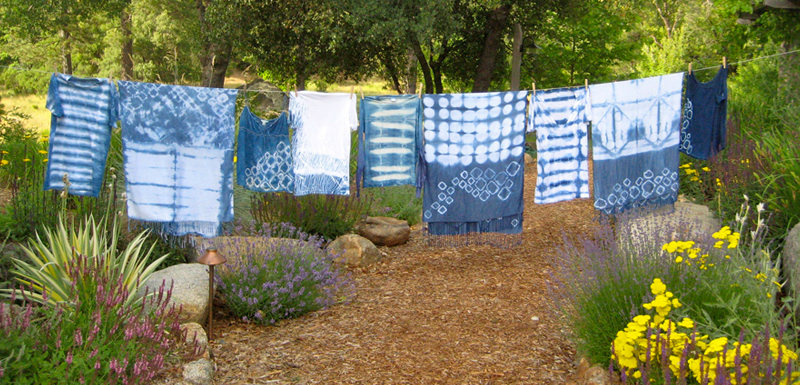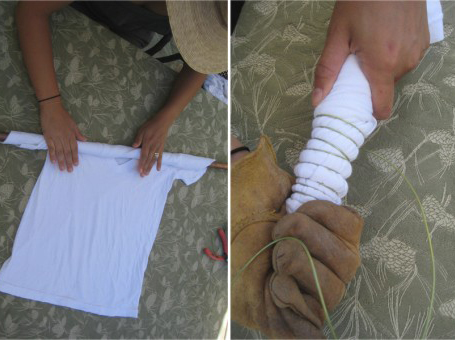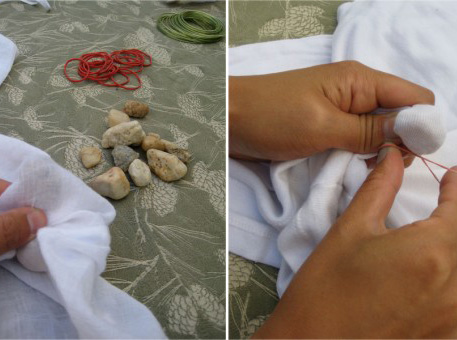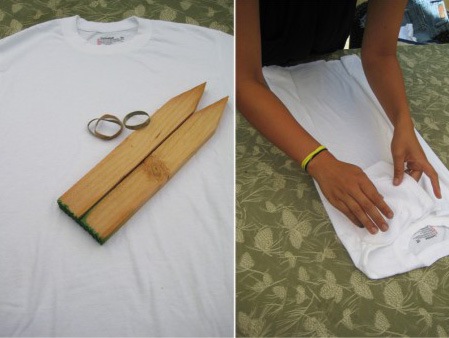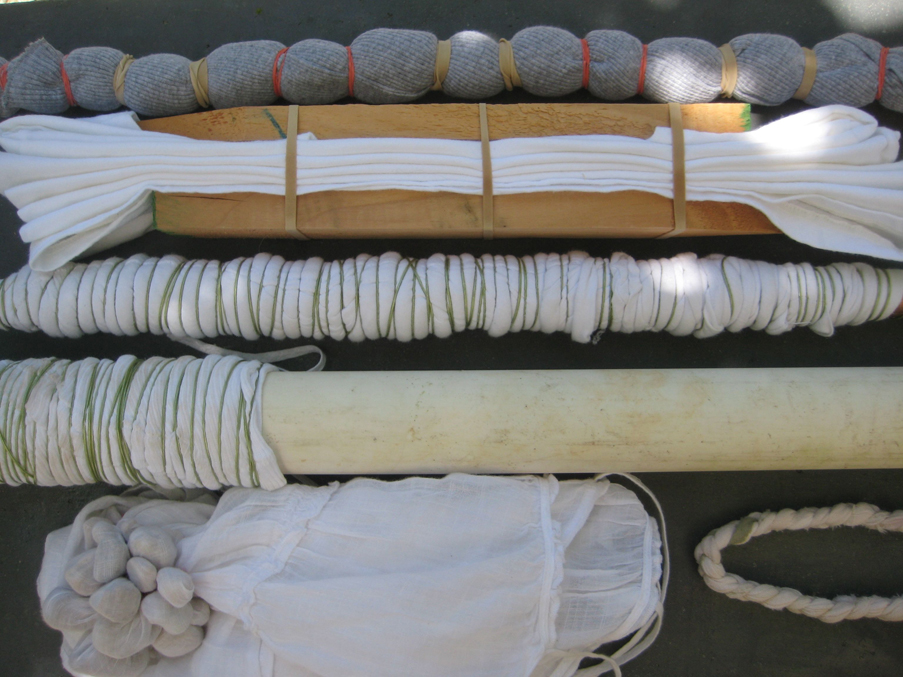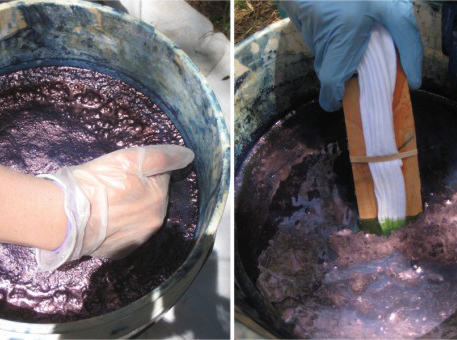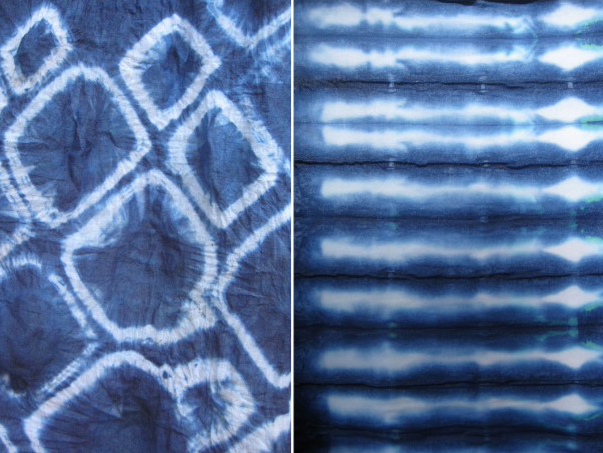STEP 1
Kumo shibori is a twist and bind resist technique. This technique involves wrapping sections of the cloth over a found object, usually small stones or pebbles. Then the cloth is bound in very close sections with rubber bands. The result is a very specific circular spider-like design.
STEP 2
Itajime shibori is a shape-resist technique. The cloth is folded like an accordion and sandwiched between two pieces of wood or any flat shaped object,
which are held in place with string or rubber bands.
The shapes prevent the dye from penetrating the fabric they cover and give an endless variety of patterns depending on the fold,
binding object and placement of rubber bands.
STEP 3
We’re ready to dye!
STEP 4
Following the dye preparation directions from the Indigo Tie Dye Kit were easy; first rinse your fabric with water,
dip in the indigo vat that was premixed before binding the fabric,
let it oxidize and dry for 20 minutes and then repeat the steps for darker shades of indigo.
Be aware that the color is much darker when wet and will fade after rinsing.
STEP 5
Rinse the fabric with water and undo the bindings to reveal the surprising creations.
STEP 6
Our patterns revealed: Arashi, Kumo and Itajime. The possibilities are endless–try varying and even combining the techniques to see what you are able to create.
Your indigo dye vat will keep for several days and dye at least 15 pieces of clothing.
STEP 6
Our Shibori dyed goodies!!!
GO TO TOP

